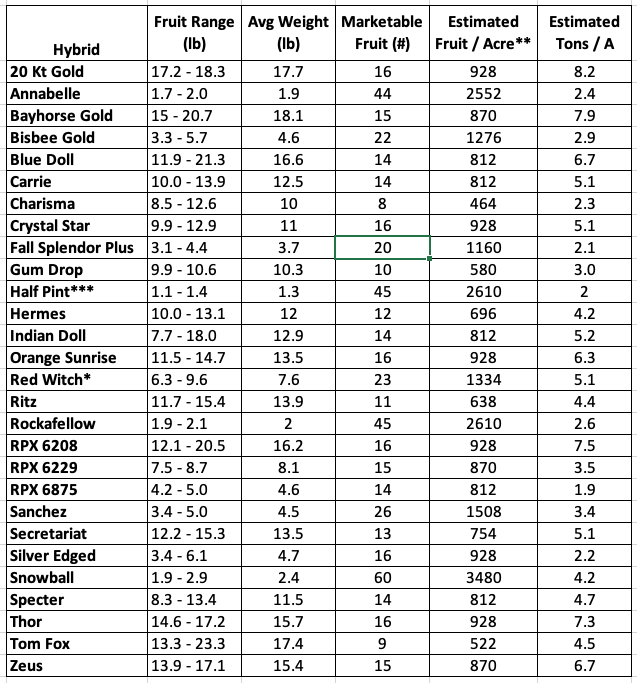There are literally hundreds of commercially available pumpkin and squash hybrids on the market today. For the past 20 years we have tried show a small sample of what is available for growers to take a look at during our annual pumpkin field day. The primarily purpose of the trial is to evaluate disease resistance to powdery mildew but also for fruit size, shape, color and yield. Although the field day was held virtually this year, here are some details about the trial including a group photo (Figure 1) plus individual statistics about each squash and pumpkin hybrid.
The trial was direct seeded on June 1 into plots 50’ long with a row spacing of 15’. The final seed spacing in each row was 3’ – 4’ allowing for 12 or 13 plants per plot. Strategy (4.5 pt/A) and Dual Magnum (1.3 pt/A) were applied for weed control pre-emerge on June 2. Later emerging weeds were removed from the plots throughout the season. Soil testing for P and K were sufficient in that field so only nitrogen was applied side-dressed at 65 lb N / A using liquid 28-0-0 on June 26. The plots were managed for powdery mildew upon first detection on July 27, with the first fungicide spray applied on July 29. Future sprays were alternated on a 7-10 day schedule with the last application on September 4. An early harvest occurred on Aug. 12 and 18 to accommodate the filming of the virtual pumpkin field day. It is important to underscore that because the harvest was conducted prior to all immature fruit sizing and maturing, the number of marketable fruit and therefore the estimated yield values are all below their full yield potential. For the fruit that were mature at harvest, the average weight should be fairly accurate under our trial conditions. Realize also that these hybrids planted in your spacing regime may have different results than this trial. Overall, the trial received 6.8 inches of rain from June 1 – September 1.
The hybrids are listed by their seed company, powdery mildew rating (none, PM tolerant, PM resistant) and days to maturity (Table 1). The same list is also shown with the range of fruit weight, average weight, number of marketable fruit, and estimated fruit and tonnage per acre (Table 2).
* seed received and planted ca. 1 month later than other hybrids leading to immature fruit at harvest.
** calculated using 50ft row length with 15ft row centers.
*** missing plants in plot leading to fewer fruit and reduced yield.
For a more detailed review of the fruit and foliage, view the Virtual Pumpkin Field Day Video from 52:84-68:43. You can also take a look at the hybrids using the 3D Field Scale Model. Click the play button and then anywhere on the model or use the shortcuts in the left hand pane.


